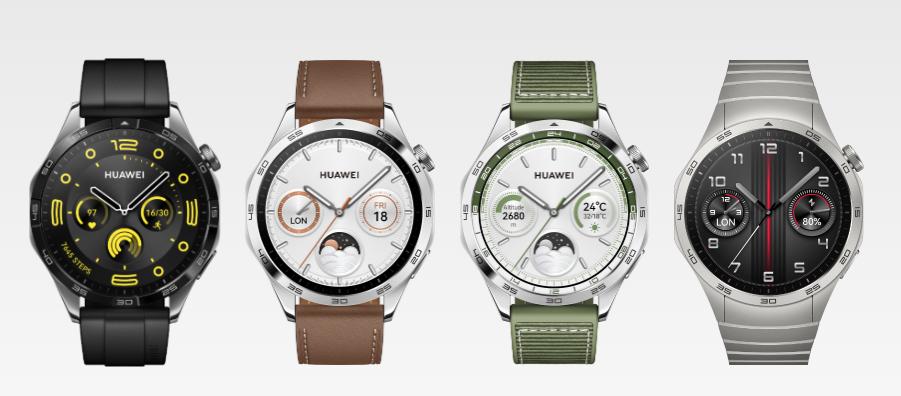How Do Wearables Impact Your Daily Health Routine?
Wearable technology has become a daily companion for consumers seeking greater control over their health and lifestyle. These gadgets give valuable data that influences daily decisions, ranging from fitness tracking to sleep and stress monitoring. Enhanced versions, such as the Huawei Watch GT6, go even further, including high-precision sensors, enhanced durability, and intelligent reminders driven by HarmonyOS 6.0. Wearables allow consumers to create better habits by integrating fitness tracking, health monitoring, and professional-level sports data. They are no longer just accessories; they serve as personal health companions, making it simpler to stay consistent and motivated in everyday life.

What Are the Benefits of Wearable Technology in Health?
Fitness and Activity Tracking
Wearables allow consumers to easily track their steps, distance, calories, and workout performance. This real-time data makes it simple to comprehend how active you are throughout the day and encourages you to move more. Devices like the Huawei Watch GT6 have advanced sports capabilities such as cycling power simulation and FTP indications, which may assist both casual cyclists and professional sportsmen in enhancing their training results. Wearables give accurate performance data thanks to over 100 training modes, automated exercise detection, and the exact Sunflower Positioning System 2.0 for outside monitoring. Walking, jogging, or cycling provides trustworthy insights that promote constant exercise and verifiable improvement over time.
Sleep Monitoring and Recovery
Quality sleep is critical to recovery and general health. Wearables now offer complete sleep analysis, recording deep, light, and REM cycles all night. The Huawei Watch GT6 improves on this experience with enhanced TruSleep tracking, which helps users understand patterns and recovery quality. It may even detect breathing abnormalities and stress levels, which may impair sleep. Wearables help you maximize your daily energy levels by providing advice on bedtime habits and recuperation tips. Consistent tracking over time helps users develop healthy sleep practices, ensuring that their bodies adequately recover from exercise or stress, resulting in improved attention, mood, and long-term well-being.
Heart Rate and Stress Management
Heart rate monitoring has always been a key component of wearables, but newer models provide greater accuracy and extra information. The Huawei Watch GT6, with its enhanced sensor mechanism, detects heart rate with professional precision, even during strenuous activities such as cycling or trail running. Beyond performance, it monitors HRV (Heart Rate Variability) to determine stress and emotional well-being. Real-time warnings warn users of irregular heartbeats, while stress detection encourages relaxation breathing techniques. These features make wearables into instruments for maintaining both physical and mental health. By delivering actionable data, they assist users in managing stress and maintaining balance.
How Do Wearables Influence Healthy Habits?
Building Consistency Through Reminders
Healthy habits rely on consistency, and wearables help you remain on target. Devices such as the Huawei Watch GT6 deliver smart reminders to move, drink, or relax depending on personal activity patterns. Its HarmonyOS 6.0 interface allows for customizable watch faces, making reminders more engaging and visually appealing. Gentle reminders throughout the day might help people with hectic schedules avoid inactive behaviors. Consistent recording of steps, exercises, and recuperation promotes minor daily gains. Over time, these reminders form strong health habits, making wellness a part of your daily routine rather than an afterthought. This consistency helps achieve long-term fitness and lifestyle objectives.

Encouraging Motivation with Data Insights
Wearables inspire motivation by turning personal health data into clear, actionable insights. The huawei watch gt6 delivers detailed reports on workouts, recovery, stress, and sleep, helping users visualize progress over time. Advanced cycle power simulations and slope measurements demonstrate how training is progressing, providing a sense of accomplishment. HarmonyOS 6.0 also allows users to customize their displays, making data easier to grasp at a glance. Users may evaluate where they are progressing and where they need to make changes by comparing daily, weekly, and monthly trends. These insights turn health tracking into a motivating tool that promotes continual effort and long-term development.
Social Sharing and Accountability
Shared support may make health journeys more pleasurable. Many wearables, like the Huawei Watch GT6, provide data sharing via linked applications, allowing for collaborative challenges and real-time updates from colleagues. For bikers, the group ride function provides live location sharing, which promotes road safety and responsibility. Sharing milestones, successes, and exercise summaries with friends or fitness communities boosts motivation and promotes consistency. When progress is obvious to others, users are more motivated to stick to their habits. This social aspect elevates health tracking from an individual activity to a communal experience, making long-term wellbeing more sustainable and satisfying.
Conclusion
Wearables have transformed how individuals manage their health and fitness by converting daily routines into measurable, actionable tasks. Fitness tracking, sleep analysis, heart rate monitoring, and motivational insights are among the features that help people live healthier and more productive lives. The Huawei Watch GT6 distinguishes itself by integrating professional-grade sports metrics, innovative sensors, high durability, and extended battery life, making it a dependable health companion. Wearables encourage users to take charge of their well-being by helping them create consistency, remain motivated, and share their success with others. By incorporating technology into daily living, they make wellness simpler, more individualized, and easier to sustain over time.
